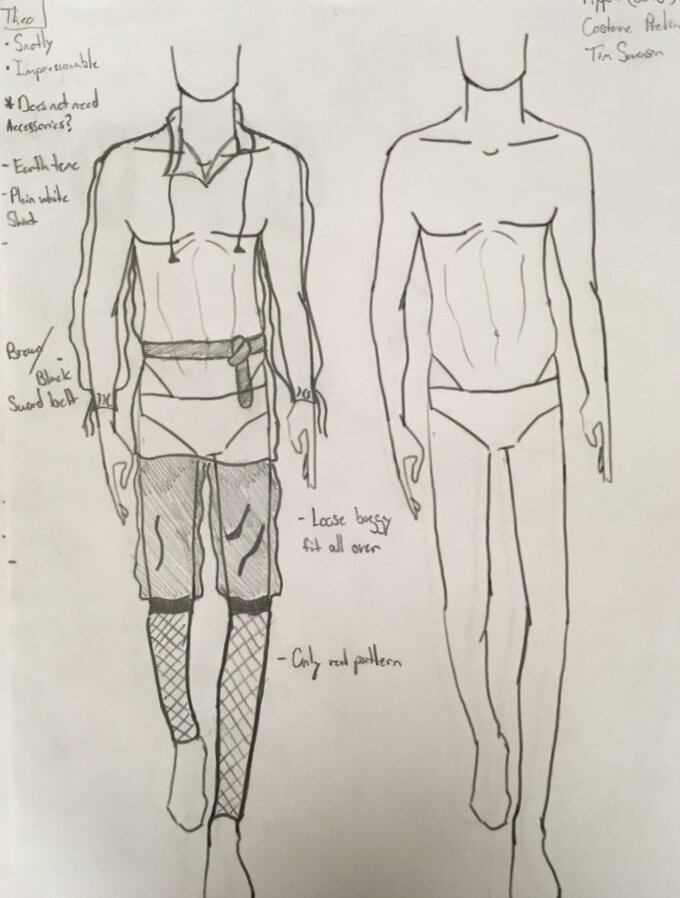Pippin
A story, of a boy becoming a man. Pippin follows the titular character as he strives to find the perfect path in life, that ever-elusive sense of content that comes to a man whom believes himself entitled to perfection, to glory. The play is blatantly self-referential in nature, and as one of the costume designers it was my goal to ensure that cheek and playfulness was preserved. The story flows in sections, each scene bringing Pippin to terms with the inevitable fallacy of his ideals. Each scene is embodied in a character- the King, his brother and stepmother, his Grandmother Berthe. And so the design for Pippin followed this, each character’s costume following the scene, and the lesson that the character was to teach to Pippin.
On account of failing treatments for a knee injury in March, there was a real chance of me going under the knife for knee surgery in the middle of the process. In light of this, we decided that my assistant at the time, Kaitlyn, would step up and we would enter a co-design role. I would handle the named cast, and she would handle the ensemble, collaborating as we went.
Photo Credit: Jim Bush
The Team
Director/Choreographer: Paul Stancato
Costume Designers: Timothy Swenson, Kaitlyn Johnson
Lighting Designer: Hannah Wolland
Scenic Designer: Joe Crumlish
Asst. Scenic Designer: Alex Sansolo
Sound Designer: Matvey Kitchen
Produced by the University at Buffalo’s Department of Theatre and Dance, October 2018
Design Concepts
For the initial research, I went and pulled a bunch of images of older, European noble dress (c.1200-1300) and much more more modern styles from the 1920s on to the mid 1930s. Thanks to the show being so self referential, I decided that a mixture of these vast eras of clothing would serve to showcase that the majority of the cast are in fact characters in a show- a fact that they as well as the audience are aware of.
Most of the royalty in this show- Charles, Fastrada, Berthe- all swing heavily towards the older fashions, as they as characters tend to care more about prosperity and power- the functions of the court. Berthe appears this way, but then changes into a 1920’s show dress, showing her true colors.
Inspiration for Fastrada’s Skirt
While style and silhouette came from books, the materials used were greatly inspired by each character’s personality. Lewis was equipped with flamboyantly aggressive colors and patterns, Charles had a kingly cape, bulking out his shoulders to accentuate his position of command. The Leading Player and the ensemble had their inspirations drawn from circus acts and the like.
Below are the initial renders and explorations I did as I got a feel for the flow of each era, and as I started to understand just what I wanted for each character. As this was my first real experience with figure drawing, I cut corners to focus on the costumes- printing off a number of these figure sketches to save time. The other purpose these sketches took on was to help me decide as to which pieces I wanted to keep of the disparate styles from the eras I decided on. Era’s are big things, and even thirty years would bring about large changes in dress and decor.
These would serve to accentuate one of the core design elements of the show- that each costume was made of one base, and each scene would have different pieces added or removed. This worked wonderfully in two ways- firstly, it meant less work for us, as each character didn’t need a full set of changes, which made for much faster quick changes- a necessity given the frequency that the leads would be on set, and the amount of changes that Paul wanted.

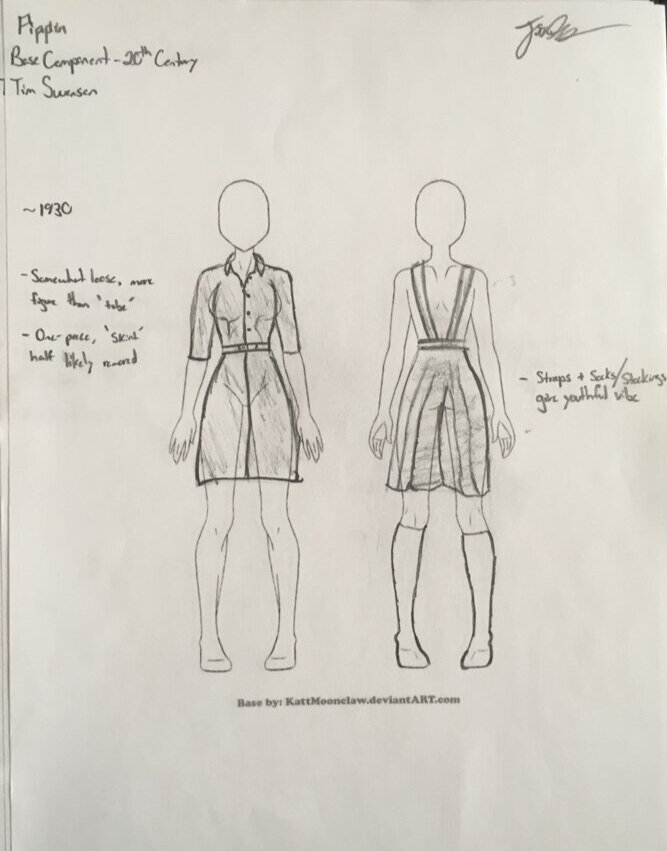
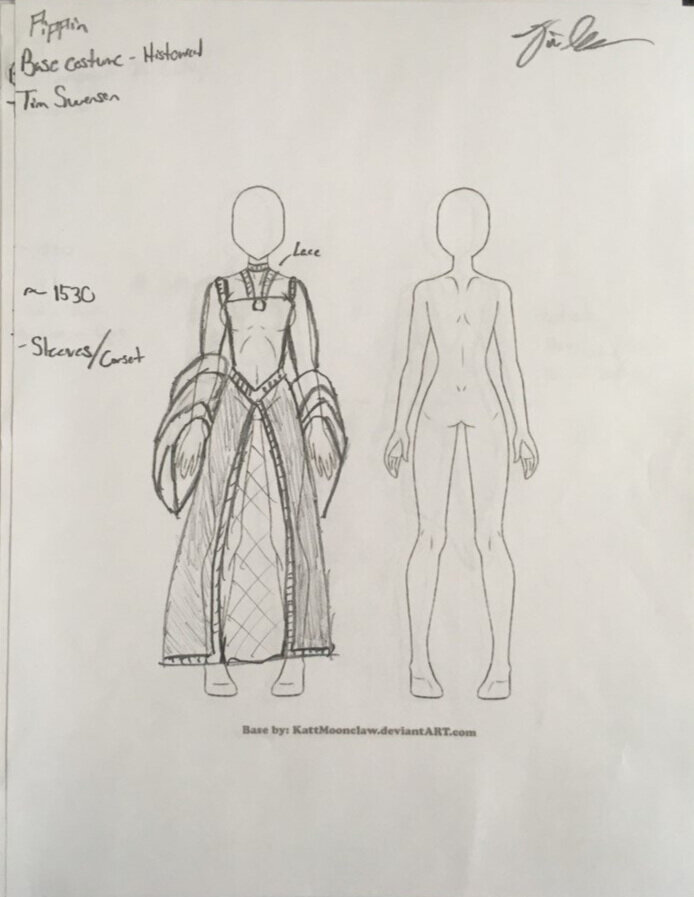
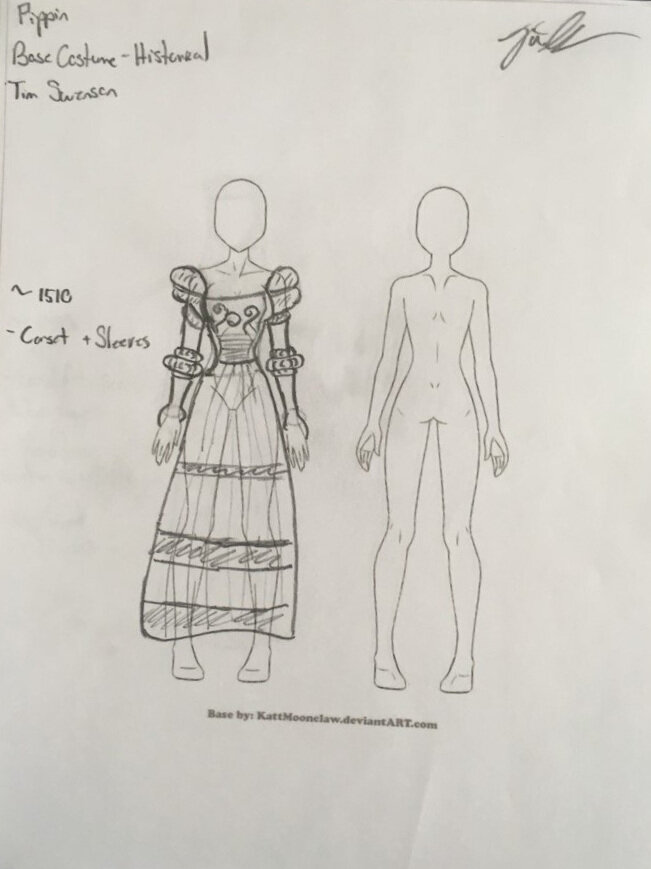
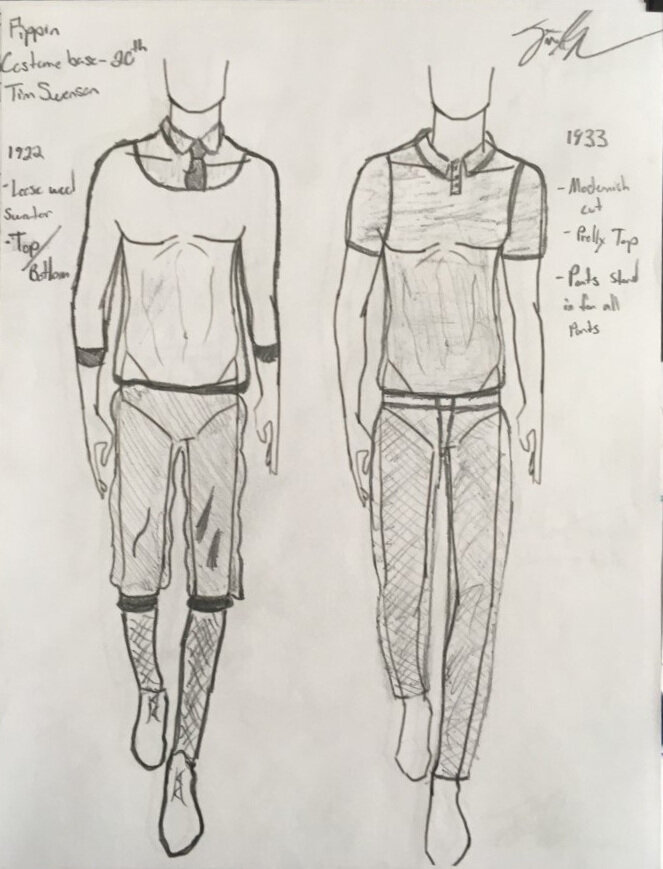
Renders
Leading Player- Base
Although vastly different than the final iteration of the Leading Player’s design, some aspects of it came through. The skin tight nature of the look, combined with the reflective nature of the material stayed around for the base layer of the costume. The frilled elbows would transition into the full sleeves of her coat, or the double skirt she would wear later.
Pippin- Base
Pippin’s base did not change overmuch from the start, save for his shirt becoming long-sleeved, and less detailed around the collar. Those filigrees would transition to his vests, and the armor would be stripped of most ornament, as it was not his, nor did battle suit him. This base would serve well during each moment we see Pippin: out of the way when a soldier, or a royal, and a remembrance of his former station as a farmer.
Fastrada- Base
Fastrada, perhaps uniquely throughout the show, did not change. This was for a multitude of reasons, but it mostly falls down to character. Fastrada, unlike most everybody else, does not require the amount of change that others did. Her power-seeking stance never really changes, nor does her willingness to use everything at her disposal- sex, love, bullying, etc- to achieve that power. Combine that with how well the costume looked, and there was little to do. As for changes from the render, the sleeves were trimmed down some to something altogether more modern, but the rest stayed the same, more or less.
Production Gallery
























